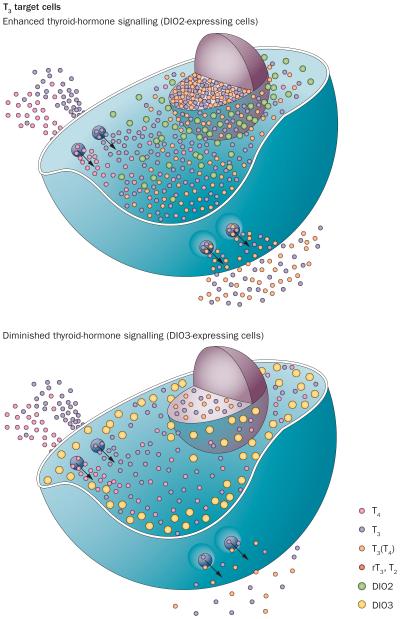Figure 1.
Iodothyronine deiodinases modulate thyroid-hormone signalling in T3 target cells. T4 and T3 enter almost all cells via membrane transporters and are then modified in a cell-specific manner by DIOs to either enhance (DIO2) or diminish (DIO3) thyroid-hormone signalling. Consequently, the flow of T3 diffusing from the cell membrane to the nucleus is increased by T3(T4), which represents T3 generated locally from T4 via DIO2. By contrast, the DIO3 pathway decreases the flow of T3 to the nucleus by terminally inactivating T3 to T2 and T4 to rT3 (rT3, T2). DIO2 generates T3 in a cell compartment adjacent to the nucleus. By contrast, DIO3 largely resides in the periphery of the cell in the plasma membrane and early endosomes. Once inside cells, T3 can diffuse to the nucleus to modulate gene expression. Abbreviations: DIO, iodothyronine deiodinase; rT3, reverse tri-iodothyronine; T2, di-iodothyronine; T3, tri-iodothyronine; T4, tetra-iodothyronine. Courtesy of BiancoLab.org.

